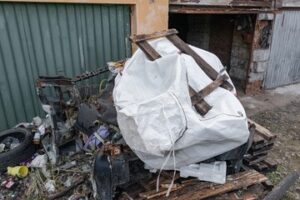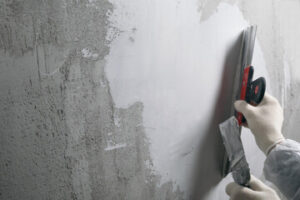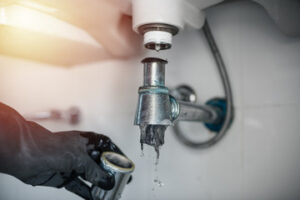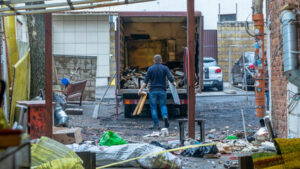When choosing a roof for your home or business it’s important to weigh the pros and cons of different materials. Metal Roofing Baton Rouge is one option that offers several benefits to consider.

Stainless steel, zinc, and copper are durable, lightweight, and long-lasting metal roofing materials. They also resist corrosion and can stand up to extreme weather.
Metal roofs are able to resist weather and extreme temperatures far better than traditional shingles. In fact, a recent McGraw-Hill survey found that the longevity of a metal roof was one of the primary reasons homeowners choose to invest in this roofing solution.
A metal roof will also withstand storm damage that can cause shingle roofs to leak. This is because metal roofing panels are able to withstand winds up to 140 miles per hour. The interlocking design of these roofs is key to their ability to withstand high winds. Furthermore, unlike shingle roofs, metal roofs don’t have the gaps that can allow water to enter.
In addition to protecting against leaks, metal roofs can also help to save money on energy bills by reflecting radiant heat instead of absorbing it. This keeps homes cooler in summer, which can significantly reduce cooling costs. In winter, a metal roof can prevent warm air from escaping the home and keep it cosy inside.
One of the best things about a metal roof is that it doesn’t require much maintenance. This is especially important for people living in a region that’s prone to wildfires. A metal roof is fire resistant and can prevent the spread of a fire, which is incredibly important for homeowners.
Additionally, a metal roof can be protected against the freeze/thaw cycle that’s often a problem for asphalt shingle roofs. As water expands when it freezes, shingles can crack and degrade. On the other hand, a metal roof doesn’t absorb moisture and will not degrade or crack in these conditions.
Lastly, a metal roof will protect against the growth of mildew, moss, and fungus that can grow in shingle roofs. This is because metal roofs are impervious to fungus and other bacterial growth. In turn, this can save homeowners from having to deal with expensive and time-consuming roof repairs.
Durable
Metal roofs have a long lifespan and are one of the most durable roofing materials available. They can withstand harsh weather conditions, including heavy rains, high winds, and extreme heat. In addition, they are resistant to rust and corrosion, making them the perfect choice for coastal regions.
There are several types of metal that can be used for roofing, including galvanized steel, aluminum, and stainless steel. Each type has its own advantages and disadvantages, so it’s important to consult with a knowledgeable roofing expert before choosing a metal roof for your home. For example, stainless steel is a completely rust-free option but can be more expensive than other metals. On the other hand, aluminum is budget-friendly and offers great durability, but it can dent under pressure. There are also new alloys that combine aluminum and steel to create more durable roofing options, such as Zincalume.
Depending on the climate and environment, metal roofs can last for up to 70 years with minimal maintenance. This is much longer than the average lifespan of asphalt shingles, which can be damaged by hail and wear and tear over time.
Additionally, metal roofs can be more energy efficient than other roofing materials. They reflect sunlight instead of absorbing it, which can help lower cooling costs. They can also shed snow and rain easily, which prevents water damage and ice dams. In addition, many homeowners may qualify for an insurance discount because of the reduced risk of roof damage.
Another advantage of metal roofing is that it is not prone to mildew, moss, or fungus. Fungus can cause structural damage to a roof, causing leaks and mold growth. Unlike shingle roofs, metal roofs are impervious to these fungi and can maintain their structural integrity for decades.
Besides their durability, metal roofs can add to the curb appeal of your home. They come in a wide variety of colors and designs to match any style or theme. They can even be painted to match the color of your house or other structures on your property. This allows you to change the look of your home without spending money on a complete roof replacement.
Energy Efficient
When it comes to energy efficiency, metal roofs offer an array of benefits. For one, they’re more efficient than asphalt shingles because metal doesn’t absorb heat from the sun as easily. Also, the reflective surface helps keep temperatures in the attic down, which in turn lowers air conditioning bills.
Furthermore, the lightweight nature of metal roofing means less structural support is required. This reduces construction waste and conserves natural resources like wood for framing and decking. Additionally, many metal roofing systems can be installed over existing shingle roofs, which further lowers the environmental impact of the project.
Unlike traditional asphalt shingles, which are a petroleum-based product that contributes 11 million tons of waste to landfills annually, metal roofs are manufactured with a high percentage of recycled materials and can be recycled at the end of their lifespans. This makes metal roofs a more eco-friendly option for homeowners and commercial property owners alike.
In addition to its efficiency, metal is a highly insulating material. It can significantly reduce heating and cooling costs by reflecting the sun’s rays and reducing the amount of solar heat that is absorbed. Additionally, metal roofs can be upgraded with underlayment that provides insulation and improves the emissivity of the roof.
Finally, the color of a metal roof can have a significant impact on how well it resists heat absorption. Darker colors are more likely to absorb heat, while lighter colors reflect more of it. This allows you to customize the energy efficiency of your metal roof to meet your needs and preferences.
When it comes to maintaining a metal roof, it is recommended to work with an experienced professional to ensure the quality of work and that your roof is in good shape. Having a regular maintenance schedule can help prevent damage and other issues, so be sure to follow the manufacturer’s recommendations. However, it is also possible to maintain a metal roof on your own by following proper care and inspections. You should also regularly remove debris, such as leaves and branches, to prevent overgrowth and blockages.
Affordable
Metal roofs can be less expensive than traditional shingles, especially in the long run. They require minimal maintenance and save homeowners money on energy bills. Additionally, they are fire resistant and can lower homeowner’s insurance rates.
A metal roof can last up to 50 years, and even longer when properly installed. This means that you can avoid the costly expense of shingle replacement or repair for many decades. However, the initial investment for a metal roof is higher than that of an asphalt shingle roof. The type of metal used and the style of roofing can influence how much a home owner spends.
Steel is the most commonly used metal for roofing, and it can range in thickness from 22 gauge to 29 gauge. Thicker gauges are more expensive, but they are also more durable and effective than thinner metals. Aluminum is another popular choice for metal roofing. It is lighter than steel, and it can be painted a variety of colors. It can also be purchased in pre-formed panels or granular coated sheets. Aluminum is less prone to denting than steel and is more flexible, but it costs more than galvanized steel.
Stainless steel is an option for premium metal roofing. It is durable, low-maintenance and has a great look. It is also environmentally friendly and can be recycled at the end of its life.
Zinc is another premium metal roof option. It is durable and has excellent corrosion resistance due to its high chromium content. This metal also ages well, turning a beautiful patina color that some people enjoy. However, the run-off from a zinc roof can stain brick, concrete, siding and other materials.
Whenever a person is considering a new roof, they want to get the most bang for their buck. That is why it’s important to research and compare different types of roofs and their prices. While nothing can replace a personal estimate from a professional, there are ways to help you narrow down your options and find the best roof for your budget. Choosing standard materials, opting for a simpler roof design and scheduling installation during off-peak seasons can all lower labor costs.





